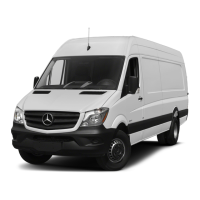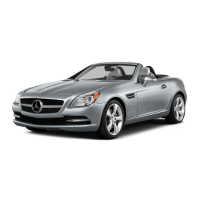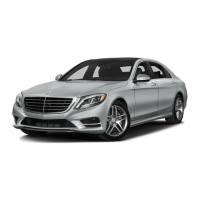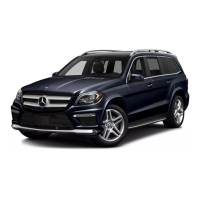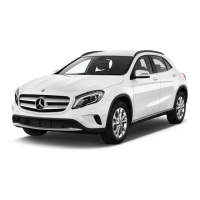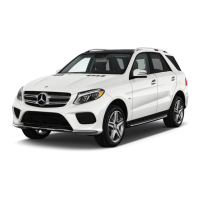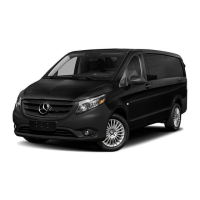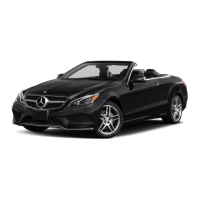Move the seat forward or back first. This will
help to avoid contact with other parts of the
interior.
Push the handbrake lever down to the stop.
The parking brake or handbrake lever could
otherwise be damaged.
Seat release (example: front-passenger seat)
The driver's seat and front-passenger seat can
be rotated by 50° and 180°.
The seats engage when facing in the direction of
travel as well as when facing in the opposite
direction and also engage at an angle of 50° to
the door.
X
Make sure that the parking brake has been
engaged and that the handbrake lever has
been pushed down to the stop (
Y page 131).
X
Adjust the steering wheel to provide the nec-
essary space to rotate and adjust the driver's
seat (
Y page 77).
X
Before rotating, push the front-passenger
seat forwards (
Y page 73).
X
To rotate the seat: push lever : on the rear
of the seat towards the center of the vehicle
and rotate the seat slightly inwards.
The rotation device is released.
X
Release lever :.
X
Turn the seat about 50° towards the outside
or inside to the desired position.
Twin front-passenger seat
X
To fold a seat cushion forwards: lift the seat
cushion out of front anchorage :.
X
Pull the seat cushion forwards slightly and out
of rear anchorage ;.
X
Fold the rear edge of the seat cushion up.
i
You can stow various articles in the space
under the twin front-passenger seat.
X
To fold the seat cushion back: fold down
the seat cushion by the rear edge.
X
Slide the seat cushion under the seat back-
rest into rear anchorage ;.
X
Push down on the seat cushion at the front
until it engages in front anchorage :.
Folding seat
G
WARNING
If the key is inserted in the partition sliding
door, it may come into contact with the per-
son on the folding seat. There is a risk of
injury.
Always remove the key from the partition slid-
ing door before a person sits on the folding
seat.
74
Seats
Seats, steering wheel and mirrors

